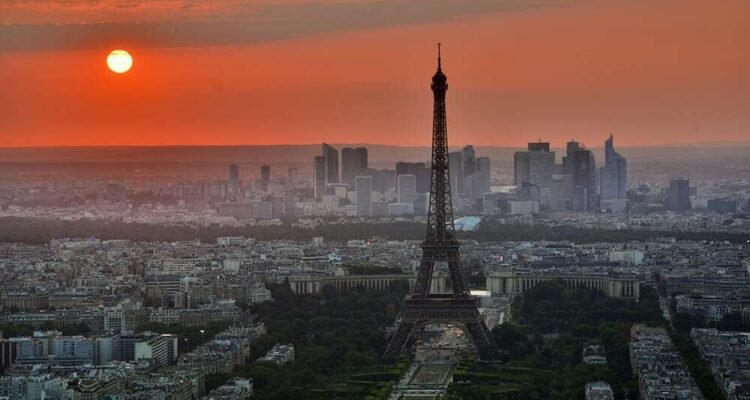Beyond Haussmann: Other Visionaries Who Shaped Paris
The unsung minds behind the city’s most seductive geometry.
When we think of Paris—the bold boulevards, the symmetric facades, the theatrical curves of stone—we think of Baron Haussmann, the imperial architect of modernity. But beyond his domineering blueprint lies a patchwork of dreamers, rebels, and geniuses who each, in their own era and idiom, dared to etch their imagination into the flesh of the city. The Paris of secrets, the Paris that whispers instead of announces? That was shaped by others.
The Socialites tip their feathered hats to the lesser-sung visionaries who also made the City of Light… light up.
Eugène Hénard — The Prophet of the Future City
While Haussmann was busy slicing medieval Paris with his rational grids, Eugène Hénard was sketching a Paris that flew. In the early 20th century, this urban visionary proposed circular intersections (hello, roundabouts!), underground transport hubs, and multi-level traffic systems—a full half-century before Le Corbusier or any American freeway. His designs shaped the Place de l’Étoile as we know it today and anticipated ecological urban planning far ahead of his time.
✨ Urban glam fact: He also wanted to create “habitable bridges” covered in green spaces—eco-chic before it was even chic.
Camille Sée — The Mind Behind the Educational Monuments
While not an architect per se, Camille Sée‘s political vision of public education gave rise to some of Paris’s most beautiful civic buildings. The elegant lycée complexes, like Lycée Louis-le-Grand and Lycée Fénelon, are products of the Sée-driven educational boom, designed to both enlighten and inspire. Classical columns, marble staircases, art nouveau frescoes—they turned learning into a theatrical experience.
🎓 Study in style: Many of these schools are still active and accessible during European Heritage Days. Step in and swoon.
Henri Sauvage — The Art Deco Alchemist
Architect Henri Sauvage took Haussmann’s linear rigidity and laced it with sensuality. One of the first to integrate Art Deco and hygienist architecture, he built stepped terraces, ceramic facades, and early social housing projects that looked like cruise ships on land. His Rue Vavin apartment block (1912) was the first Parisian building with rooftop gardens. Sauvage’s buildings still shimmer in neighborhoods like the 6th and 18th—but most passersby have no idea.
🛁 Spot his signature: Glazed white tiles. Architectural hygiene never looked so sexy.
Jean-Charles Moreux — The Surrealist’s Architect
If Dali had designed buildings, they would’ve looked like Jean-Charles Moreux creations. This 1930s French architect infused Paris with poetic drama: temples with no gods, staircases that ascend to nowhere, courtyards whispering riddles. He’s best known for Musée des Arts et Traditions Populaires, but you’ll also find his surrealist footprint in the Parc de Bagatelle and even certain set designs at the Opéra Garnier.
🌀 Secret stroll: The gardens he helped shape in the Bois de Boulogne are full of metaphysical mystery.
Émile Trélat — The Socialist Stonecutter
A civil engineer turned reformer, Émile Trélat pioneered working-class architecture with dignity. In an era when the poor were packed like sardines, Trélat created affordable, elegant buildings in airy blocks with light, ventilation, and shared gardens. His influence birthed the Cité ouvrière movements of the 19th century, still visible in the eastern arrondissements—like a Haussmann for the people.
🌱 Feel the legacy: Check out Rue des Vignoles (20e)—it’s a living museum of worker housing with unexpected charm.
Catherine de Médicis — The Renaissance Power-Builder
Long before the boulevards, there were queens. And none were more architecturally ambitious than Catherine de Médicis. Her vision gave us the Tuileries Palace and Gardens, which set the tone for classical French formalism. The symmetry, axial perspectives, and grandeur she commissioned became the aesthetic DNA of royal and later republican Paris.
👑 Fun twist: She had astrologers embedded in the construction process. Witchy meets architectural.
Charlotte Perriand — The Silent Modernist
Behind the masculine facade of mid-century design (Le Corbusier, Jeanneret, etc.) was Charlotte Perriand, an architect and designer who quietly revolutionized interiors and public spaces. She designed student housing, libraries, and urban plans that embraced modernism with softness. In Paris, her influence glows most strongly in Cité Internationale Universitaire, where her modernist touch dances in light and color.
🪑 Design tip: Her furniture still inspires minimalist Parisian apartments today. Less edge, more elegance.
Closing Notes from the Cobbles
Paris is a city of masks—what you see often hides what you should feel. While Haussmann may have choreographed its grand ballets, these other thinkers composed the intimate arias, the subtle harmonies, the whispered songs between the cracks. To walk Paris with their names in mind is to see the city… unveiled.
Keep your eyes open, your heart tender, and your footsteps a little off-center. The most beautiful corners of Paris were not imposed—they were imagined.
The Socialites recommend: next time you stroll down a boulevard, pause. Look sideways. History’s real geniuses might just be hiding in the shadows.


